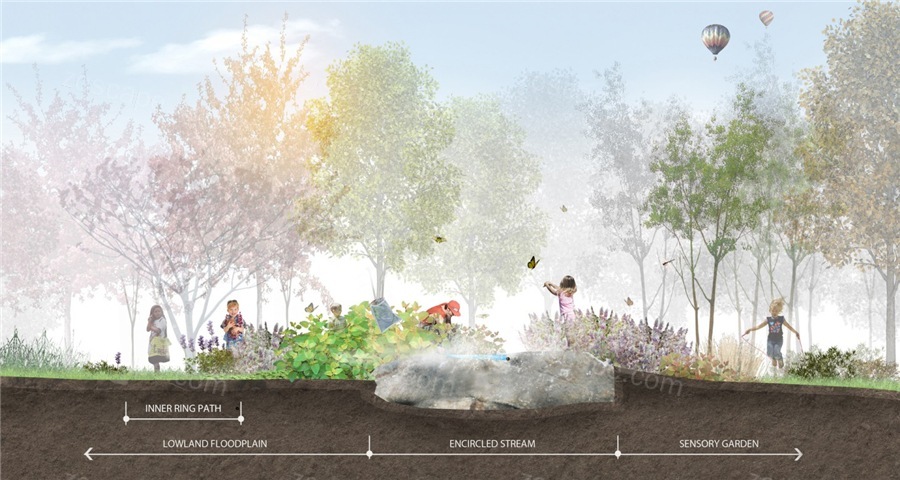 7 { r% Z) ~4 Z% B4 o4 ~
7 { r% Z) ~4 Z% B4 o4 ~
) M( L# p$ J' T8 x
 % I: |" @) g+ Y" h1 b. N
% I: |" @) g+ Y" h1 b. N
' Z0 L; Z- U+ ^: T
8 p) q8 K/ l! K* o$ v H7 X" k& o

" [1 ~: V& d6 D% t- Y
* X2 `9 n# b; q; N. x! q }, w6 G% ]; y0 Q6 E9 L( c; x3 U
The Chicago Botanic Garden Learning Campus is envisioned as a gateway to the natural world for kids and their families. As nature increasingly becomes a distant concept for children plugged into the digital environment, our work encourages direct engagement with plant life, and the natural cycles of nature in order to reconnect our youth to the ecological world. As the idea of “getting dirty” in the outdoors becomes more of an abstraction for children, we have designed this garden to highlight process, transformation, and creative discovery in this four season landscape experience.) ~7 p/ B- ~% z! [/ Z
2 `, r2 t" y ?( \" j3 |# aThe overall concept is guided by strategically located elements that focus on natural materials and systems. A series of play mounds and an encircled stone stream define the framework for the proposal. Within these two areas, opportunities for individual exploration and group learning are integrated into the canopy and earthen experiences. Kids of all ages are considered in these various types of discovery from fossilized imprints of seeds and leaf structures in the stones and wood planking to the various landscape typologies that transform over the seasons.
, v& @7 _3 `5 t, F
; J6 U4 M% Y$ p; w3 x
" ^* d6 Z; Y/ Z R; s芝加哥植物园" l) p8 O1 O" u F4 ~ y6 d
; W7 j" J" N6 M- j. q芝加哥植物园将是一个为青少年群体提供的教育和娱乐的园区, 设想为儿童及其家庭通往自然世界的门户。随着大自然越来越成为城市儿童的一个遥远的概念,我们的工作旨在鼓励与植物生活和大自然相接触,以便将青少年群体重新连接到生态世界。 我们设计了这个花园,突出了芝加哥植物园这个四季都存在的景观体验
3 d5 r" b7 s( {; S' B; o& V+ _# h( i" |/ V) x
* K3 f# x" A z7 h8 m6 b
# g- g8 U+ h9 o" X+ n; w
|